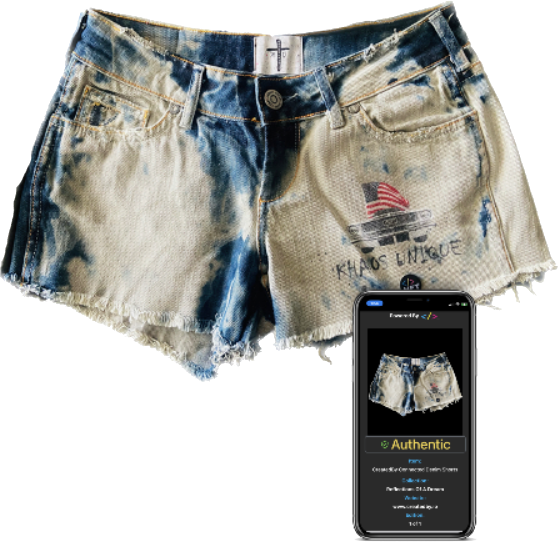
Before Web3, brands primarily relied on Web2 channels like social media to connect with consumers. in fact, According to recent statistics, 77% of companies use social media To reach customers.
However, consumer engagement strategies are evolving.As new technologies mature Advanced ideas such as blockchain and artificial intelligence Brands are starting to incorporate these elements To better engage with consumers.
Web3 technology enables joint development of beauty products
Yana Boboshkova, co-founder of community commerce company KIKI World, told CryptoNews that while the internet provides a platform for brands to be seen, new technologies are enabling online products to be more than just passively consumed. He said he can guarantee that.
“KIKI is on a mission to empower passionate consumers,” Boboshkova said. “We founded the company with a simple vision: our customers and communities should be able to earn compensation and participate in the success of what they champion.”
To ensure this, Boboshkova explained that KIKI uses blockchain infrastructure to connect the community with products that may be of interest.
Boboshkova, known as the “KIKI platform'', said of this: unauthorized network We enable creators, brands, or curious individuals to create campaigns that reward participants.
“Our blockchain infrastructure unlocks connections between communities, products, and interests, creating a composable data network that can be used to build new experiences, connections, and products,” she explained. did.
Today, we are excited to share the gradual rollout of our permissionless community commerce platform. @a16zcrypto and @Estee Lauder Companies as our first funding round partners.
KIKI believes that the Internet and the communities it connects are the driving force behind creation and innovation. pic.twitter.com/sxXgKUllox
— KIKI World (@kikiworld_) April 9, 2024
To put this into perspective, Boboshkova shared that the KIKI platform has recently launched a number of “multiplayer brands.”
“This refers to products that allow thousands of customers to participate in what we build next,” she said.
For example, Boboshkova said in May 2023: KIKI has started a campaign The result was the first co-developed product.
“Pearl’s Pretty Nail Graffiti was KIKI’s first community-created product. Since then, we have launched four additional product lines, including the SDK skin development kit and Play Paint Markers, a 3D face and body paint. ” said Boboshkova.
According to Boboshkova, all of these products were created through community input and voting mechanisms. She added that participants will be rewarded with “KIKI points”, or digital collectibles, for their actions.
digital collectibles is an important part of KIKI's infrastructure. Boboshkova explained that KIKI's on-chain collections and the metadata they represent enable engagement logic centered around user interests.
“By integrating on-chain and off-chain campaign interaction data tied to user preferences and intent, our ecosystem can build a rich profile to better understand the products your audience really wants. You’ll understand and you’ll be able to create,” she said. “Our smart contracts allow abstracted on-chain intent records to be seamlessly integrated into an easy-to-use, familiar user experience. It means we can maximize our usefulness to our base.”
This concept may be new to most brands, but KIKI recently announced Led by $7 million funding round by a16z cipher and Estée Lauder Companies NIV.
“Consumers are at the heart of everything we do at The Estée Lauder Companies,” said Shana Landava, senior vice president at NIV.
“That's why we're excited about the KIKI team's vision to find new ways to put our customers first,” she added.
NFC-enabled fashion enables customer connectivity
Near Field Communication (NFC) enabled fashion It also allows brands to better connect with their customers.
Cathy Hackl, CEO of spatial computing and artificial intelligence company Spatial Dynamics, told Cryptonews that she believes NFC-connected fashion can provide consumers with a direct touchpoint and communication channel.
Early NFC-enabled use cases We're already starting to demonstrate this. For example, Tom Wallace, founder of connected goods ecosystem CreatedBy, told CryptoNews that his brand connects physical goods to digital “tokenized twins.”
“The tokenized twins will be placed on a blockchain network using CreatedBy NFC tags, allowing brands to share the full story and history of each product,” Wallace said. “This increases transparency around sourcing, production and ethical practices.”
According to Wallace, digital twins that reside on blockchain networks are solving critical problems for brands.
“Consumers are increasingly demanding more information and visibility into the products they purchase,” he said. “Blockchain-based authentication and storytelling capabilities directly address this need for sustainable sourcing and supply chain transparency, while also providing the ability to enable continuous engagement with customers.”
Wallace explained that CreatedBy recently conducted a case study with Wonder Raw, a sustainable apparel brand that uses micro-certified organic cotton and vegan inks.
Wallace shared that CreatedBy was able to incorporate Wonder Raw's sustainability efforts and verification of its sourced materials by encoding data into the attached NFC tags. on individual garments.

“The second half of this is an ongoing engagement with brands and owners on programming activations in the garment lifecycle,” Wallace added. “This includes end-of-life upcycling to a ‘new’ product that retains on-chain data from the original product.”
Wallace also pointed out that CreatedBy's “Tech Layer” encrypts all product information and activations. He pointed out that physical goods could: encoded with
pasted NFC tag – These can be activated on any mobile phone to initiate authentication, verification, brand storytelling, and product engagement experiences for consumers.
Will more brands use Web3 technology to connect with consumers?
Platforms like KIKI and CreatedBy are strengthening the connection between consumers and brands, but mainstream adoption may take time.
For example, Huckle noted that many brands are pausing their Web3 efforts.
“This is especially true as brands focus on AI initiatives,” she added.
Wallace also pointed out that one of the biggest barriers to adoption is education.
“This has always been an issue for many brands using Web3 technology,” he said. “I also think Web3 is a victim of its own hype. Despite the huge resurgence of cryptocurrencies, there is currently a stigma associated with Web3 and anything crypto related.”
Challenges aside, Huckle noted that major brands like Louis Vuitton remain committed to Web3. Vogue Business reported that Louis Vuitton opened last September. Discord server designed for establishing connections With the brand's online community and NFT holders.
Huckle said so too. Examples of using blockchain to track provenance It may emerge as AI develops further.
“Once NFC-enabled fashion can communicate with the AI embedded in new devices, much of that fashion will become an early prototype or an early example of an item that can truly transcend the physical and virtual. It will be,” she said.





